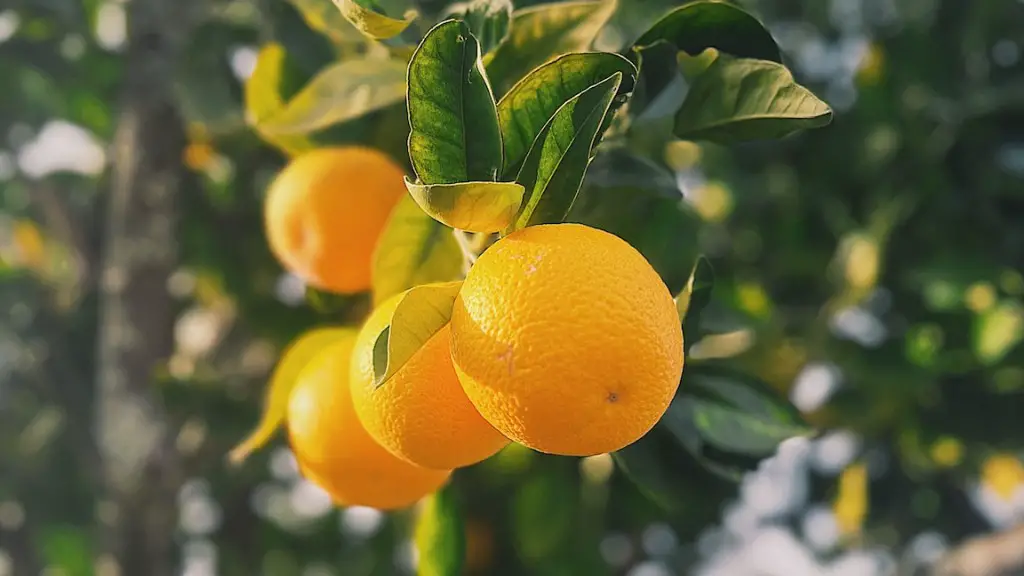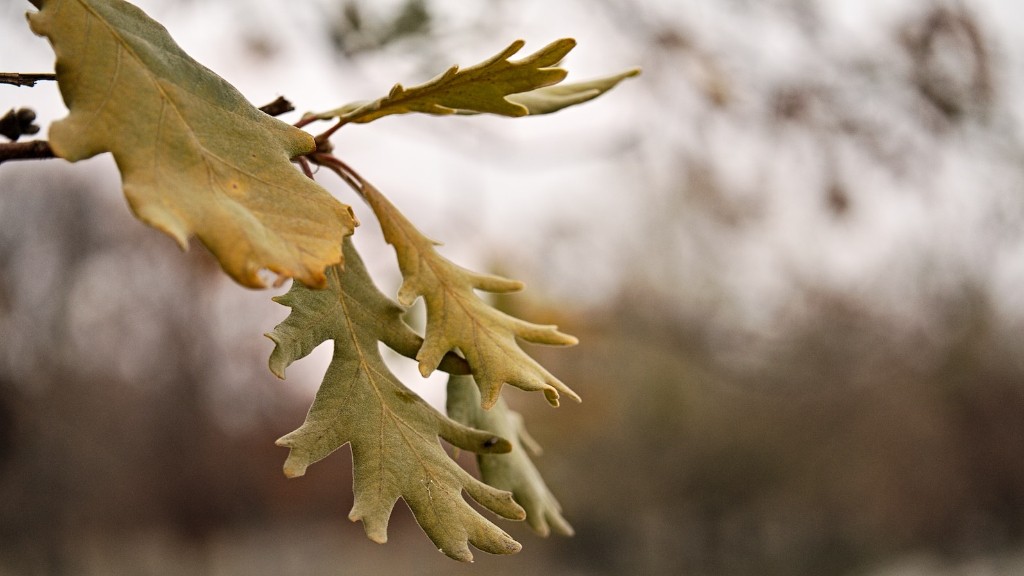Often, people want to grow a coconut palm tree from a seed, but they are unsure of how to go about it. There are a few steps that need to be followed in order to grow a coconut palm tree from seed. First, the seed must be soaked in water for 24 hours. Then, the seed should be placed in a pot with well-drained soil. The pot should be placed in a warm area and the soil should be kept moist. Once the seed germinates, it should be fertilized every two weeks. The tree should be given plenty of sunlight and water. Once the tree is about a year old, it can be planted in the ground.
To grow a coconut palm tree from seed, you will need to start with a fresh coconut. Place the coconut on its side and insert 4 toothpicks evenly around the middle. Suspend the coconut over a bowl or container so that the water can drain. Change the water every day, and in about a week, the coconut will begin to sprout. Once the sprouts are about 3 inches long, plant the coconut in a pot filled with coconut husks or well-draining potting mix. Keep the soil moist and fertilize monthly. In about 6-10 months, your coconut palm tree will be ready to transplant outside.
How long does it take to grow a coconut tree from seed?
Coconut palms are a type of palm tree that is grown for its edible fruit. The fruit of the coconut palm is known as a coconut. Coconuts are a popular food and ingredient in many dishes. Coconut palms are grown in tropical climates and can take up to 20 years to mature and produce fruit.
A coconut for germination should be a fallen nut in which you can hear water sloshing when you shake it. The husk should be left on, and the nut should be soaked in a pail of water for two to three days before planting. To grow a coconut palm as a house plant, plant it in a shallow hole, burying only the lower third of the nut.
Can you grow a coconut tree from a baby coconut
To plant a coconut tree, you will need a fresh coconut that still has the husk on it. Shake the coconut to make sure it still has water in it, then soak it in water for two to three days. After the coconut has soaked, place it in a container filled with well-draining potting soil.
The palm has a moderate growth rate. Outdoors it will mature and reach its full coconut production in around 15 to 20 years, and it can live for decades beyond that. Indoors these palms are generally short-lived, they remain small, and they often don’t produce fruit.
To grow and care for a coconut palm indoors, start by planting the palm in a well-draining potting mix. Water regularly, keeping the soil moist but not soggy. Place the palm in a bright spot, but avoid direct sunlight. Fertilize monthly with a palm fertilizer.
Common problems with indoor coconut palms include brown leaves, yellow leaves, and a lack of fruit production. Brown leaves can be caused by too much direct sunlight or by the palm being too dry. Yellow leaves can be caused by too much water or fertilizer. If your palm isn’t producing fruit, it may not be getting enough light.
How fast do coconut palms grow?
The coconut palm is a tropical palm tree that can grow up to 30m tall. It has a single trunk with a crown of large, feather-like leaves. The coconut palm produces a large, round fruit that contains a white, fleshy interior. The coconut palm starts fruiting 6–10 years after the seed germinates and reaches full production at 15–20 years of age.
Coconut palms are relatively easy to grow indoors, as long as you place them in a sunny spot and water them regularly. With a little care, you can enjoy the tropical look of a coconut palm in your own home!
Do you soak palm seeds before planting?
Most palm seeds require a soak in water to first soften (ferment) the fleshy fruit wall. The water should be changed each day if possible. This will help to prevent the seeds from rotting.
To prevent waterlogging, it is best to use deep clay pots when sowing palm seeds. Palm seeds are relatively easy to germinate from seed if you follow some simple steps. Place the seeds in the pot and cover with a layer of well-draining soil. Water the seeds regularly, and in a few weeks, you should see new growth.
What triggers a coconut to germinate
Coconut palms can either be grown in partial shade or full sun, as long as the soil is well-drained. It takes 3 to 6 months for a coconut to germinate. A germinated coconut has roots pushing through the husk and a sharp shoot emerging from the end of the nut.
When planting your coconut tree, make sure that 1/3 of the coconut sticks out of the soil. This will help the tree to get the necessary sunlight and air circulation. If you are planting your tree inside, use a pot that is at least 10 inches (25 cm) deep and has a diameter large enough to accommodate the seed.
Can I grow a coconut tree in my backyard?
Coconuts palms are a tropical plant that can be grown outdoors in warm weather regions. They are best planted during the summer months when rainfall is plentiful. The trees take several years to mature and can reach up to 100 feet in height. Coconuts are the fruit of the palm and are a source of food and water for many people in tropical regions.
Different types of green and yellow can be used for different purposes. For example, yellow can be used to add color and green can be used for a more natural look.
What is the lifespan of a coconut tree
The date palm (Phoenix dactylifera) is a palm in the family Arecaceae (palm family), cultivated for its edible sweet fruit. Although its place of origin is unknown because of long-distance dispersal, it probably originated from lands around the Persian Gulf.
The species is naturally distributed in northern Africa, the Canary Islands, and southwestern Asia, from Morocco and Portugal in the west to the Arabian Peninsula, Iran, Pakistan and India in the east.
Date palms are cultivated in Florida, Texas, California, Arizona, New Mexico, Louisiana, and Hawaii in the United States.
Date palms are grown for commercial use in large plantations in Pakistan, Morocco, Algeria, Tunisia, Egypt, Iran, Iraq, Saudi Arabia, Israel, Sudan, Libya and Oman. They are also widely grown as an ornamental plant in warm climates.
The main use for date palms is for their fruits, which are harvested throughout the year. The fruits are used fresh, or dried and eaten as snacks, or used in a variety of dishes, such as date syrup, date tea, date baked goods, and date pudding.
The Wood from the date palm is used for a variety of purposes, including fuel, construction material
The areca palm is a tropical plant that is native to Madagascar. It is also known as the bamboo palm, because its stems resemble bamboo. The areca palm is a popular indoor plant because it is very easy to grow and care for. It can tolerate low light levels and does not need a lot of water. The areca palm grows to a height of about 6 feet and has large, green, feathery leaves. It makes an excellent houseplant or office plant, and is also a popular plant for use in landscaping.
Do coconut palms need lots of water?
watering once or twice per week in the summer months.
The survey conducted by the Philippine Coconut Authority showed that a chloride deficiency is widespread in 24 out of the 54 provinces that produce coconuts. Sodium chloride, also known as common table salt, can be effectively used to control this problem.
Warp Up
1. Obtain a fresh coconut with a mature brown husk from a grocery store or market.
2. Select a location for planting the coconut palm tree. Pick an area that gets plenty of sunlight and has well-drained soil.
3. Using a sharp knife, carefully make a hole in the coconut husk.
4. Stick the coconut in the hole, pointed side up.
5. Backfill the hole with soil, and water well.
6. Place the coconut palm tree in a bright location, and water regularly.
7. In a few months, the coconut palm tree will sprout and begin to grow.
Growing a coconut palm tree from seed is not as difficult as it may seem. With a little patience and the proper care, your coconut palm tree will thrive. Follow the steps above and enjoy your own piece of the tropics!



